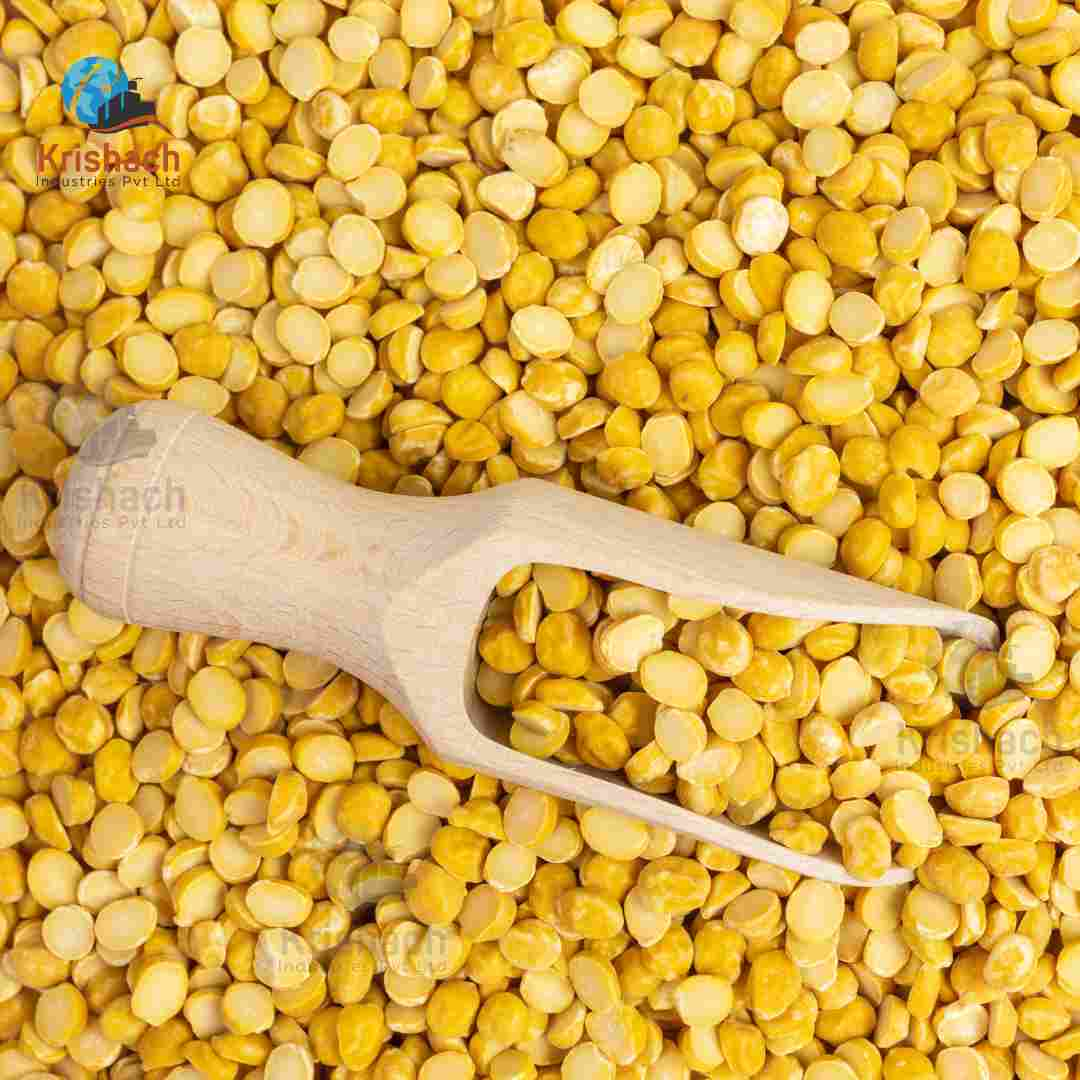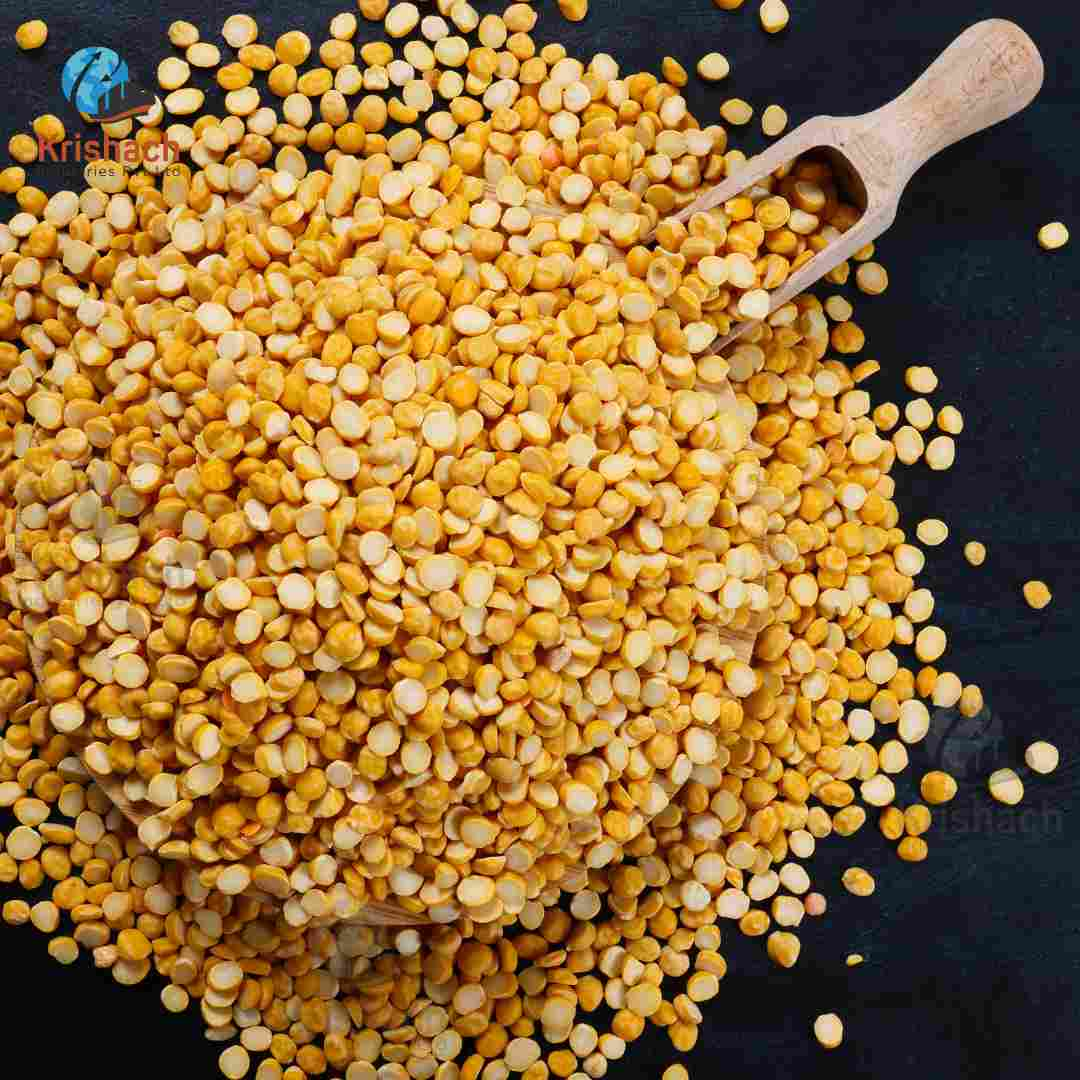Chana Dal, also known as split chickpeas, is a widely consumed lentil in Indian cuisine. It is made by removing the outer skin of black chickpeas (Desi chickpeas) and then splitting them to create small, yellow, half-rounded pulses. Chana Dal is known for its mild, nutty flavours and rich texture, making it a staple in various Indian dishes like curries, soups, and savory snacks.
Key Characteristics:
Appearance: Small, yellow, and round halves of chickpeas.
Size: Approximately 3-4 mm in diameter.
Texture: Firm when raw but softens to a creamy texture when cooked.
Aroma: Earthy and slightly nutty, with a mild fragrance.
Flavour: Nutty, slightly sweet, and rich. It readily absorbs flavours from spices and other ingredients in dishes.
Specification:
Uses:
Chana dal is used in a variety of Indian dishes, including dals, soups, stews, and salads. It can also be ground into flour for baking.
Nutritional Value: Chana Dal is an excellent source of plant-based protein and dietary fibre. It is also rich in essential vitamins such as B-vitamins and minerals like iron, magnesium, and potassium. Additionally, it has a low glycaemic index, making it a good option for managing blood sugar levels.
Benefits:
Chana dal is rich in protein, fiber, vitamins, and minerals. It supports digestive health, weight management, and provides sustained energy.
Cultivate Seasons for India:
Chickpeas, from which chana dal is made, are typically sown in October-November and harvested in February-April.
Our Services
Reliable Sourcing:
Establishing strong partnerships with local farmers and suppliers is essential for securing a consistent supply of high-quality chickpeas (Chana Dal). The sourcing process should prioritize regions known for premium chickpea cultivation, such as Madhya Pradesh, Rajasthan, and Maharashtra, where optimal soil and climate conditions contribute to superior yield and quality. Collaborating with farmers who use sustainable and traditional farming methods ensures the chickpeas are non-GMO and free from synthetic chemicals or pesticides. Supporting local agricultural practices, especially those that emphasize organic and environmentally friendly methods, contributes to sourcing high-grade Chana Dal.
Premium Quality Assurance:
To ensure the chickpeas meet international quality standards, a rigorous quality assurance process is critical. This involves testing for purity, contaminants, and pesticide residues to ensure the product is free from impurities. Certifications such as ISO, HACCP, FSSAI, and USDA Organic should be obtained to verify that the chickpeas comply with food safety and quality regulations. Regular testing is performed for moisture content, size, colour, and protein levels to ensure they retain their natural flavours, aroma, and nutritional properties.
The Cleaning and Sorting Process:
The cleaning and sorting of chickpeas (Chana Dal) involve several stages to ensure only the highest quality product is delivered. Initially, the chickpeas undergo pre-cleaning to remove large debris such as stones, dirt, and other foreign materials using mechanical separators and air blowers. The grading process follows, where the chickpeas are sorted based on size, ensuring uniformity, while broken or undersized seeds are removed. De-stoning machines are used to eliminate heavier impurities, and magnetic separation ensures the removal of metal particles. Aspirator air cleaners help in eliminating lighter impurities like dust, and gravity separators are employed to retain only mature, fully developed chickpeas. colour sorting, often using advanced optical sorters, removes discoloured or damaged chickpeas, ensuring visual and quality consistency. After confirming that the moisture levels are maintained below 8-10% to prevent mold growth, the chickpeas are packaged in airtight, moisture-proof containers to preserve their freshness and quality until they reach the market.
Packaging, Shipping & Delivery
Packaging:
Bags and Pouches:
For Chana Dal, high-quality food-grade materials such as laminated multi-layer pouches (made of materials like PET, PE, BOPP, and Aluminium foil) are used. These bags are moisture-proof and help retain the freshness, flavours, and aroma of the spices. Zip-lock pouches, stand-up pouches, and resealable bags are also popular for smaller quantities.
Polypropylene (PP) Woven Bags:
These are the most common types of bags used for packaging large quantities (25 kg and 40 kg) of Chana Dal. They are made of woven polypropylene material, which is strong, lightweight, and durable, providing excellent resistance to tearing and damage during handling and transport.
Laminated Bags:
For additional protection against moisture and humidity, PP woven bags can be laminated with a layer of plastic film. This lamination creates a barrier against moisture, ensuring the spices stay dry and fresh during transportation and storage.
Multi-Wall Paper Bags:
These bags consist of several layers of kraft paper, which provide strength and are often lined with a plastic or polyethylene layer to offer protection against moisture and humidity. They are environmentally friendly and widely used in many markets for exporting food products.
Vacuum-Sealed Packaging:
This type of packaging removes air from the package before sealing, which helps prevent oxidation and moisture build-up, preserving the quality and extending the shelf life of the spices.
Paper or Carton Boxes:
After the packaging, the smaller bags or pouches are placed in corrugated cardboard cartons or paper boxes. These cartons are sturdy, stackable, and protect the contents from physical damage during handling and transportation.
Palletization and Wrapping:
Cartons or sacks are often stacked on wooden or plastic pallets and wrapped with stretch film or shrink wrap. This provides stability, reduces the risk of damage during transport, and makes handling more efficient.
Export Documentation:
Handle all necessary export documentation, including phytosanitary certificates, certificates of origin, and any specific certifications required by the importing country.
Efficient Shipping:
Partner with reliable freight forwarders and logistics companies to ensure timely and safe delivery of goods. Offer multiple shipping options (air, sea, or land) based on customer preferences.























